Yes, your engine light may come on when you need oil. If your engine light is illuminated, it could be a sign that your engine lacks oil, so it is important to check your oil level and add oil if necessary.
Neglecting to address this issue promptly can lead to serious engine damage and costly repairs. Regularly checking your oil level and maintaining the proper oil levels can help prevent unnecessary complications and extend the life of your engine. We will explore the reasons why your engine light may come on when you need oil and provide tips on how to address this issue effectively.
So, let’s dive in and get started.
Can The Engine Light Indicate The Need For Oil?
The engine light can sometimes indicate the need for oil, signaling a low oil level or other issues. It’s important to address this promptly to prevent potential damage to your engine.
Understanding The Purpose Of The Engine Light
The check engine light is a crucial component of your vehicle’s diagnostic system. This warning light, also known as the malfunction indicator lamp (MIL), illuminates to alert you of potential issues within your engine. While the engine light can indicate various problems, it’s important to understand if low oil level can trigger it.
Common Causes Of The Engine Light Coming On
There are several reasons why the engine light may come on, so it’s vital to be aware of these common causes. Some potential culprits behind the illuminated engine light include:
- Faulty oxygen sensor
- Loose or damaged gas cap
- Issues with the catalytic converter
- Malfunctioning spark plugs or wires
- Problems with the mass airflow sensor
Determining If Low Oil Level Is The Cause
One common question that arises is whether low oil level can cause the check engine light to turn on. While low oil level on its own may not trigger the engine light, it can certainly be a contributing factor to other engine problems. If your vehicle’s engine is not receiving enough lubrication due to low oil, it can lead to damage or overheating, which may then trigger the engine light.
To determine if low oil level is the cause of the engine light, it is recommended to check your oil level regularly. Ensure that your car is parked on level ground, then locate the dipstick and remove it from the engine. Wipe it clean, reinsert it, and pull it out again to see the oil level. If it is below the recommended level, it’s crucial to add oil to prevent potential engine complications.
Remember, if your engine light is on, it’s essential not to ignore it. Ignoring the engine light can result in further damage to your vehicle and potentially costly repairs. It’s always best to address the issue promptly to avoid any potential risks.
Understanding Your Car’s Dashboard Lights
Understanding your car’s dashboard lights is essential for maintaining the health of your vehicle. If your engine light comes on, it may indicate a need for oil. Stay proactive in monitoring your dashboard to avoid potential issues and keep your car running smoothly.
Understanding Your Car’s Dashboard Lights When it comes to understanding what your car is trying to tell you, it’s important to familiarize yourself with the various dashboard lights. These lights are like your car’s way of communicating with you, alerting you to potential issues or maintenance needs. One of the most commonly seen lights is the engine oil light, also known as the check engine light. In this section, we’ll delve into the details of these lights and their significance.
The Engine Oil Light
The engine oil light, depicted by an oil can or an oil drop symbol, is a crucial dashboard light that you shouldn’t ignore. When this light illuminates, it typically indicates that your car’s engine oil levels are running low or that there’s a problem with the oil pressure. To prevent potential engine damage, it’s vital to address this warning as soon as possible.
What does it mean when the engine oil light comes on? The engine oil light serves as a reminder to check your engine oil levels. If the light illuminates while you’re driving, it signifies that the oil pressure in your engine has dropped, which can be a sign of low oil levels or a malfunctioning oil pump. Ignoring this warning light could lead to serious engine problems or even engine failure.
What should you do when the engine oil light comes on? When the engine oil light comes on, the best course of action is to pull over to a safe location as soon as it’s convenient and turn off the engine. Check the engine oil level using the dipstick, which is typically located near the engine.
If the oil level is low, you should add more oil to bring it to the recommended level. If the oil level appears to be fine, it’s advisable to contact a professional mechanic to diagnose and fix the issue.
Check Engine Light
The check engine light is another important dashboard light that you should pay attention to. This light, depicted by an engine symbol, is designed to alert you to a wide range of potential issues with your car’s engine or emissions system. While the check engine light can indicate minor issues, it can also point to serious problems that require immediate attention.
What does it mean when the check engine light comes on? When the check engine light illuminates, it means that the car’s onboard diagnostic system has detected a problem. This could be anything from a loose gas cap to a malfunctioning sensor or a more significant engine issue.
The light doesn’t specify the exact problem but serves as a warning to get your car checked by a professional. What should you do when the check engine light comes on? If the check engine light comes on, it’s essential to have your vehicle inspected by a qualified mechanic.
They will use a diagnostic tool to read the error code stored in your car’s computer system and determine the cause of the issue. It’s crucial not to ignore the check engine light as it could lead to further damage and costlier repairs down the line.
Other Important Dashboard Lights
In addition to the engine oil light and the check engine light, there are several other dashboard lights that you should be aware of. These lights can vary depending on the make and model of your car, but here are some common ones to look out for:
- Battery light: Indicates a problem with the charging system.
- Brake system light: Alerts you to issues with the braking system.
- ABS light: Indicates a problem with the anti-lock braking system.
- Tire pressure light: Alerts you to low tire pressure or a tire puncture.
| Symbol | Meaning | Action |
|---|---|---|
 |
Battery light | Check the battery and charging system |
 |
Brake system light | Inspect the braking system and add brake fluid if necessary |
 |
ABS light | Have the ABS system checked |
 |
Tire pressure light | Check and adjust tire pressure |
Knowing what these dashboard lights mean and how to respond to them can help you stay safe on the road and prevent further damage to your vehicle. If any of these lights come on or you’re unsure about their meaning, it’s always best to consult your vehicle’s owner’s manual or seek professional assistance.
Remember, paying attention to your car’s dashboard lights is an integral part of vehicle maintenance and ensuring your car runs smoothly for years to come.
What Does The Engine Oil Light Indicate?
The engine oil light is a crucial indicator that signals when your engine requires oil. Ignoring this warning can lead to engine damage and costly repairs, so it’s essential to address the issue promptly.
One of the most important warning indicators in your vehicle is the engine oil light. Ignoring this signal could lead to serious engine damage and expensive repairs. It’s crucial to understand what the engine oil light indicates so you can take immediate action to resolve the issue. In this article, we will explore the two main reasons why your engine oil light might come on: low oil pressure and an oil change reminder.
Low Oil Pressure
When the engine oil light illuminates, it typically means that your vehicle’s engine is experiencing low oil pressure. This can happen due to a variety of reasons, including:
- Insufficient oil levels in the engine
- Oil leaks or a damaged oil pump
- Clogged oil filter
- Worn-out engine bearings
If your engine oil light comes on and you notice any of the following symptoms, it’s crucial to address the issue promptly:
- Loud knocking or ticking noises from the engine
- Oil spots or puddles beneath your vehicle
- Visible smoke or burning smell
- Loss of engine power or poor performance
Driving with low oil pressure can lead to severe engine damage, as the oil is responsible for lubricating and cooling vital engine components. If you suspect low oil pressure, immediately pull over to a safe location and check your oil levels. If they are low, top up the oil as necessary. However, if the problem persists, it’s advisable to seek professional assistance to diagnose and fix any underlying issues.
Oil Change Reminder
Another common reason for the engine oil light to illuminate is an oil change reminder. Many modern vehicles are equipped with an oil life monitoring system that keeps track of your engine’s oil condition and mileage. When the system determines that the oil is dirty or has reached its recommended service interval, it will trigger the engine oil light to alert you that it’s time for an oil change.
It is essential to regularly change your engine oil as recommended by the vehicle manufacturer. Neglecting oil changes can result in the oil losing its lubricating properties, leading to increased engine friction and wear. Over time, this can cause serious damage to your engine and reduce its longevity.
When your engine oil light comes on due to an oil change reminder, it’s crucial to schedule an oil change at your earliest convenience. Consult your vehicle’s owner’s manual for the recommended oil change interval and follow it diligently. Regular oil changes not only preserve your engine’s performance but also enhance fuel efficiency and extend its lifespan.
Can Low Oil Trigger The Check Engine Light?
The check engine light may come on when your engine is low on oil, indicating the need for an oil change or additional oil. It’s important to address this issue promptly to avoid potential engine damage.
Direct Impact
When it comes to the check engine light illuminating on your dashboard, there can be a variety of reasons behind it. One of these reasons is low engine oil. Yes, you heard it right – low oil levels can trigger the check engine light to come on. This happens because engine oil plays a crucial role in lubricating and cooling various engine components, ensuring smooth performance. When the oil level becomes too low, it can cause friction between these components, leading to overheating and potential damage.
If your engine oil is running low, the lack of lubrication can directly impact certain sensors within your engine. These sensors are responsible for detecting any abnormalities or malfunctions in the engine, and if they are not receiving proper lubrication, they may start to malfunction themselves. This can trigger the check engine light to illuminate and alert you to the issue at hand.
Indirect Impact
While low oil levels directly impact the sensors, they can also indirectly trigger the check engine light due to the impact on other engine systems. When the engine is running with insufficient oil, it has to work harder to perform its functions, resulting in increased strain on various components. This additional strain can lead to issues such as decreased fuel efficiency, increased emissions, and even engine misfires.
In addition, low oil levels can cause the engine to overheat, which can further aggravate the situation. Heat buildup can lead to the expansion of different engine parts, causing them to warp or even crack. This, in turn, can lead to oil leaks, decreased performance, and the eventual triggering of the check engine light.
In summary, low oil levels can have both direct and indirect impacts on your engine, which may trigger the check engine light to come on. It’s important to ensure that your engine always has the proper amount of oil to operate smoothly and efficiently. Regularly checking your oil levels and promptly addressing any issues can help prevent unnecessary complications and keep your engine running smoothly.
Other Reasons Your Check Engine Light May Be On
When your check engine light comes on, it can be a cause for concern. While low oil levels are a common trigger for this warning light, there are other potential reasons that may explain its activation. Understanding these possible culprits can help you diagnose the issue and take appropriate action to keep your engine running smoothly. Below, we explore three common reasons your check engine light may be on.
Oxygen Sensor Failure
One possible reason your check engine light may illuminate is due to an oxygen sensor failure. Your vehicle’s oxygen sensors measure the amount of oxygen in the exhaust gases, which helps regulate the fuel mixture. When the oxygen sensor malfunctions, it can cause inaccurate readings and disrupt the engine’s performance. In turn, this can trigger the check engine light. A faulty oxygen sensor not only affects your vehicle’s fuel efficiency but can also lead to damage to other engine components if left unaddressed.
Loose Fuel Cap
Believe it or not, something as simple as a loose fuel cap can cause your check engine light to come on. The fuel cap is responsible for maintaining pressure in the fuel tank and preventing the evaporation of fuel vapors. If the cap is loose or not properly sealed, it can trigger the check engine light. Before rushing to a mechanic, ensure that your fuel cap is securely tightened. If the light persists, you may need to replace the cap altogether. Fortunately, this is a relatively inexpensive fix that can save you from unnecessary repairs or engine damage.
Catalytic Converter Failure
The catalytic converter plays a critical role in reducing harmful emissions from your vehicle. When it fails, it can cause the check engine light to illuminate. Catalytic converter failure can be caused by various factors, including engine misfires, excess fuel, or an aging converter. Ignoring this issue can lead to decreased fuel efficiency and potential damage to other engine components. If you suspect a faulty catalytic converter, it is crucial to have it inspected and repaired promptly to prevent further issues.
In conclusion, although low oil levels are often the culprit when your check engine light comes on, there are other reasons to consider. From oxygen sensor failure to a loose fuel cap and catalytic converter issues, addressing these potential problems promptly can help keep your engine in optimal condition. If your check engine light remains illuminated despite addressing these common issues, it is always advisable to consult a qualified mechanic who can diagnose the problem accurately.
What To Do When Your Engine Oil Or Check Engine Light Comes On
When your engine oil or check engine light comes on, it means your engine may need oil. It’s important to check your oil levels and top up if necessary to avoid potential damage.
Check Your Oil Level
When your engine oil or check engine light comes on, the first thing you should do is check your oil level. Low oil levels can cause the engine light to illuminate, indicating that your engine needs oil. To check your oil level, park your car on a level surface and wait for the engine to cool down.
Locate the oil dipstick, usually marked with a bright-colored handle, under your car’s hood. Remove the dipstick, wipe it clean with a cloth, and reinsert it fully. Pull it out again and observe the oil level. A dipstick typically has indicators for “low” and “full”. If the oil level is below the “low” indicator, it means you need to add oil to your engine.
| Indicators | Oil Level | Action Required |
|---|---|---|
| Above “full” indicator | Excess oil | Visit a professional to drain the excess oil. |
| Between “full” and “low” indicator | Optimal oil level | No immediate action required. |
| Below “low” indicator | Low oil level | Add oil to your engine. |
Bring Your Car To A Professional
If your oil level is fine but the engine or check engine light remains illuminated, it is recommended to bring your car to a professional as soon as possible. An illuminated engine light could indicate a more serious issue that requires expert attention.
A professional mechanic will use diagnostic tools to determine the exact cause of the engine light and perform necessary repairs or maintenance. Ignoring the illuminated engine light can lead to further damage and more expensive repairs down the line.
Remember, it’s important to address both low oil levels and persistent engine lights promptly to ensure the longevity and optimal performance of your vehicle. Regularly checking your oil level and seeking professional help when needed will help keep your engine running smoothly and avoid potential costly breakdowns.
Preventative Measures To Avoid Seeing The Engine Oil Light
Keeping your engine properly lubricated is essential for its overall performance and longevity. When the engine oil light comes on, it’s a clear indication that something is wrong and your engine might be at risk. However, by taking a few preventive measures, you can avoid the dreaded engine oil light and ensure your engine runs smoothly. In this article, we’ll discuss two important preemptive steps you can take: regular oil changes and using the right type of oil.
Regular Oil Changes
One of the simplest and most important preventive measures you can take to avoid seeing the engine oil light is to schedule regular oil changes. Over time, engine oil breaks down and becomes contaminated with dirt, debris, and other impurities. This can lead to a decrease in its lubrication properties and potentially cause engine damage.
By adhering to the manufacturer’s recommended oil change intervals, you can ensure that your engine always has clean and fresh oil. Regular oil changes help to remove impurities, maintain proper lubrication, and ensure the overall health of your engine. Remember to check your vehicle’s owner’s manual or consult with a trusted mechanic to determine the appropriate oil change schedule for your specific vehicle.
Using The Right Type Of Oil
Using the right type of oil for your engine is another crucial step towards avoiding the engine oil light. Different engines require different viscosities and formulations of oil to provide optimal lubrication. Using the wrong type of oil can lead to poor engine performance, increased wear and tear, and potential engine damage.
When selecting oil for your vehicle, always refer to the manufacturer’s recommendations outlined in the owner’s manual. This will ensure that you are using the oil that is specifically designed for your engine’s needs. Additionally, consider the climate and conditions in which you typically drive. For example, if you frequently drive in extreme heat or cold, you may need an oil with specific temperature ratings.
Lastly, pay attention to the oil’s quality and certifications. Look for oils that meet or exceed industry standards, such as those marked with the American Petroleum Institute (API) certification. These oils have undergone rigorous testing to ensure they meet the necessary performance requirements.
By regularly changing your engine oil and using the right type of oil, you can greatly reduce the chances of your engine oil light coming on unexpectedly. These two preventive measures will help keep your engine properly lubricated, promoting optimal performance and extending its lifespan.
The Consequences Of Ignoring Warning Lights
When it comes to the engine light in your vehicle, it’s important not to ignore it. This small, yet significant, indicator can provide valuable information about your car’s health and maintenance needs. Ignoring warning lights can lead to a range of consequences, including potential damage to your engine and safety risks. In this article, we will explore these consequences in more detail and emphasize the importance of addressing warning lights promptly.
Potential Damage
Ignoring warning lights, such as the engine light indicating the need for an oil change, can have serious implications for your vehicle’s engine. The engine is a complex system that relies on various components working in harmony. When oil levels are insufficient, the engine is no longer properly lubricated, leading to increased friction and heat buildup. Over time, this can cause significant wear and tear on the engine’s metal parts, leading to damage and potentially expensive repairs.
Moreover, oil not only lubricates the engine but also helps to keep it clean by preventing the buildup of dirt and debris. Without regular oil changes, particles can accumulate, forming sludge that further hinders the engine’s performance. This buildup can restrict the flow of oil to vital components, impede proper lubrication, and hinder the engine’s overall efficiency.
Safety Risks
Ignoring warning lights can also pose safety risks for both you and other drivers on the road. For instance, an engine light that indicates low oil levels could mean reduced power, engine stalling, or even a complete breakdown. These unexpected vehicle malfunctions can occur at the most inconvenient times, such as when you’re driving on a busy highway or in adverse weather conditions.
In addition to the risk of sudden engine failure, neglecting warning lights can lead to compromised brake performance. Some vehicles are equipped with brake warning lights that alert you when there might be an issue with your brakes. Ignoring such warnings can result in decreased braking efficiency, longer stopping distances, or even complete brake failure. These scenarios can be extremely dangerous and put both you and your passengers at risk of accidents and injury.
Remember, warning lights are designed to help keep you safe on the road. Treating them as urgent matters and addressing the underlying issues promptly can help prevent potential damage to your engine and reduce safety risks on the road.
Frequently Asked Questions For Does Your Engine Light Come On When You Need Oil
Can Low Oil Cause A Check Engine Light To Go On?
Low oil levels can trigger a check engine light.
Will A Light Come On If My Car Is Low On Oil?
Yes, if your car is low on oil, a warning light will illuminate.
How Does Your Car Act When It Needs Oil?
When your car needs oil, it may show signs like low oil pressure, engine overheating, strange noises, or a check engine light. These signs indicate that the car’s engine is not properly lubricated, which can result in engine damage if not addressed promptly.
Does A Light Come On When You Need An Oil Change?
Yes, a light usually comes on to indicate the need for an oil change. This light is a reminder for routine maintenance.
Conclusion
It is crucial to pay attention to your engine light and not ignore it, especially if it comes on due to low oil levels. Ignoring this warning can lead to serious engine damage and costly repairs. Regularly checking and changing your oil is a simple yet effective way to keep your engine running smoothly and avoid unnecessary breakdowns.
So, next time your engine light illuminates, don’t delay – check your oil immediately!


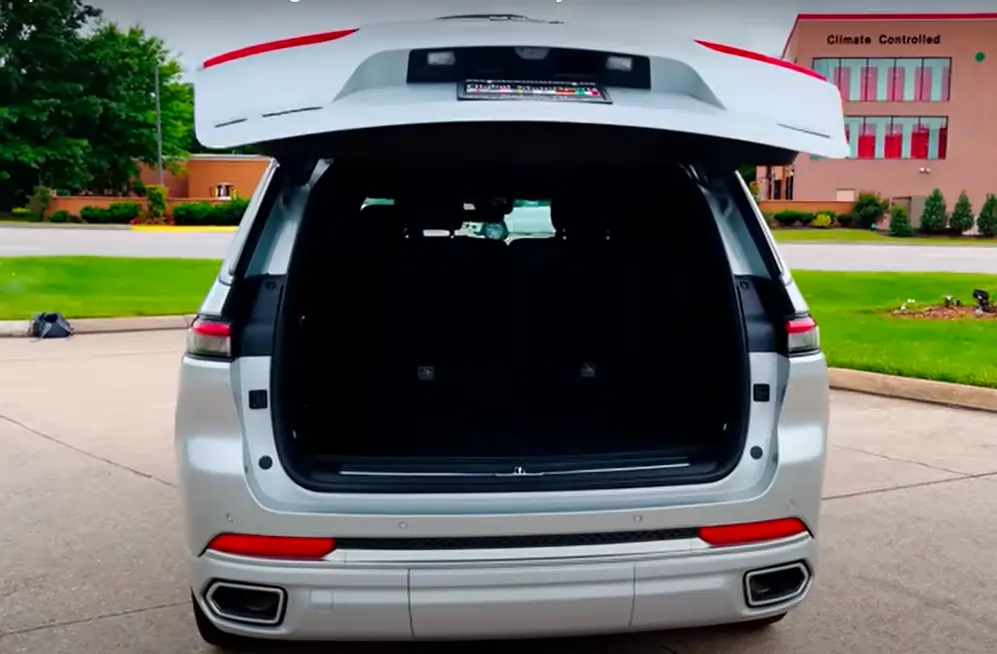





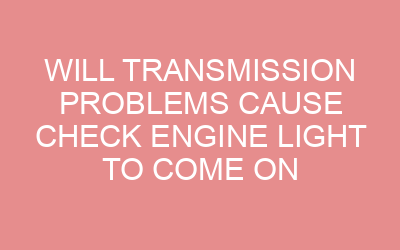
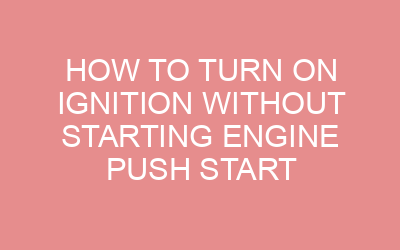
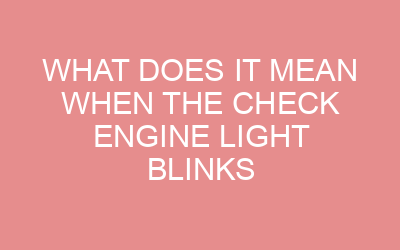
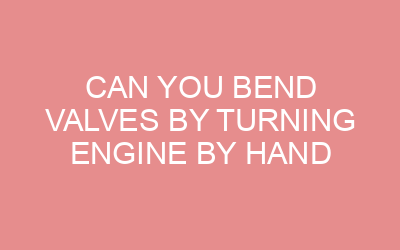


Leave a Reply